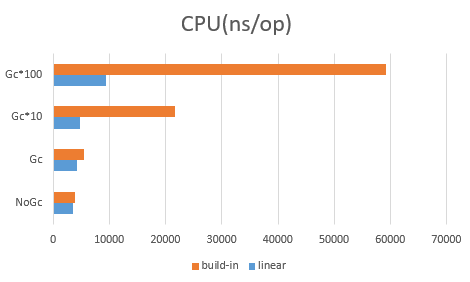Speed up the memory allocation and improve the GC performance, especially for dynamic-memory-heavy applications.
- A large amount of memory never needs to be released. (global configs, read-only assets like navmesh)
- Massive temporary objects with deterministic lifetime. (protobuf objects send to network)
Linear allocator:
- Can greatly reduce the object scanning pressure of GC. Linear allocator is just a few byte arrays internally, but pool is normal container always need to be scanned fully.
- More general. Linear allocator can allocate various types of objects.
- Much simpler and faster on reclaiming memories. No need to manually release every object back but just reset the allocation cursor.
- Much cheaper. Linear allocators reuse memory chunks among each other via chunk pool.
- Memory efficient. Memories are more compact, CPU cache-friendly.
- Don't store the pointers of build-in allocated objects into linear allocated objects. (There's a debug mode for checking external pointers)
- Don't store and use the pointers of linear allocated objects after the allocator is reset or released. (In debug mode, the allocator traverses the objects and obfuscate the pointers to make any attempting usage panic)
- Not support concurrency.
type PbItem struct {
Id *int
Price *int
Class *int
Name *string
Active *bool
}
type PbData struct {
Age *int
Items []*PbItem
InUse *PbItem
}
func main() {
ac := linear_ac.Get()
defer ac.Release()
var d *PbData
ac.New(&d)
d.Age = ac.Int(11)
n := 3
for i := 0; i < n; i++ {
var item *PbItem
ac.New(&item)
item.Id = ac.Int(i + 1)
item.Active = ac.Bool(true)
item.Price = ac.Int(100 + i)
item.Class = ac.Int(3 + i)
item.Name = ac.String("name")
ac.SliceAppend(&d.Items, item)
}
}Benchmark_LinearAc
>> Latency: max=944ms, avg=6ms.
Benchmark_LinearAc-8 1 9589733200 ns/op
Benchmark_buildInAc
>> Latency: max=3535ms, avg=7ms.
Benchmark_buildInAc-8 1 7651476400 ns/op
